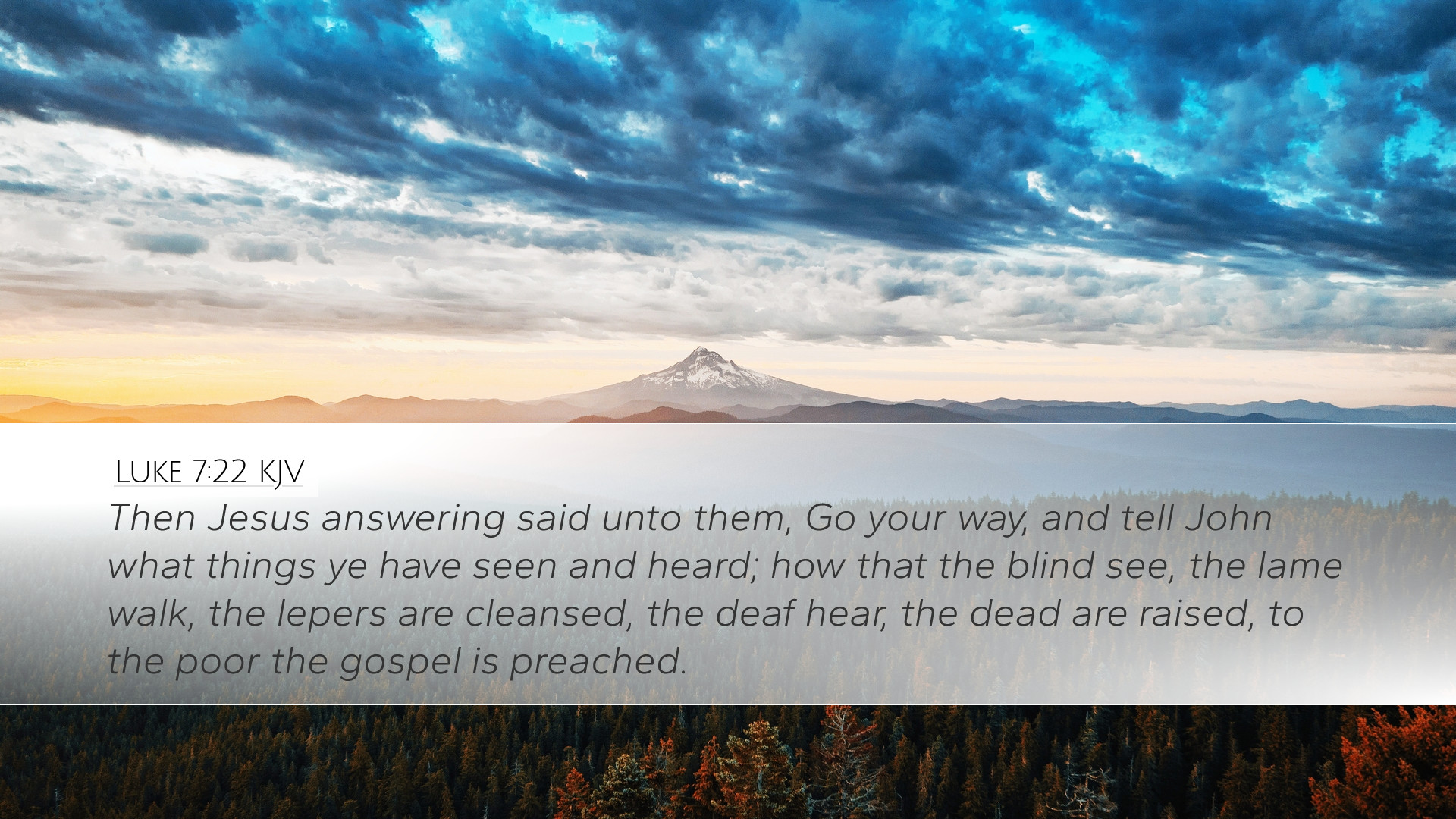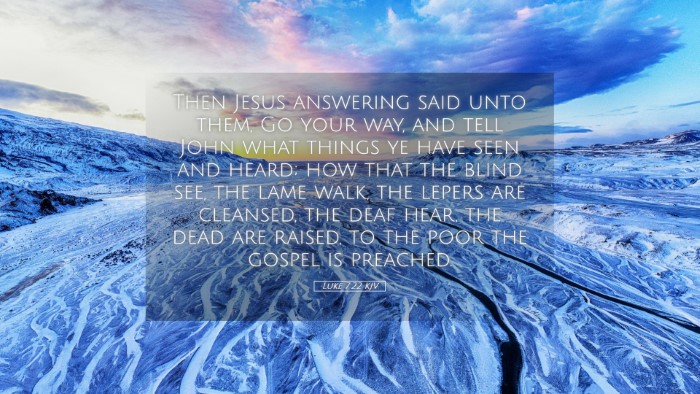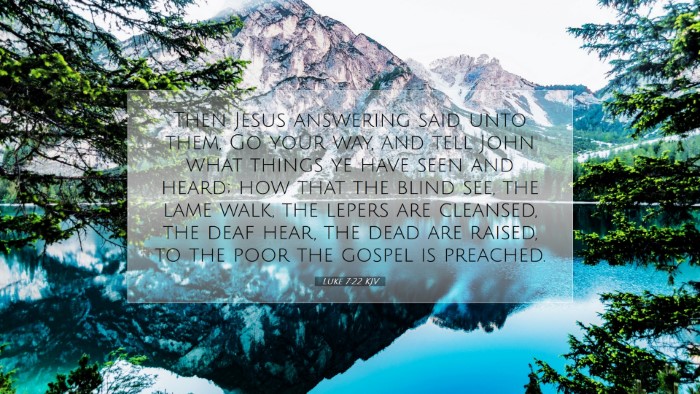Commentary on Luke 7:22
Luke 7:22 states, "Then Jesus answered and said to them, 'Go and tell John the things you have seen and heard: that the blind see, the lame walk, the lepers are cleansed, the deaf hear, the dead are raised, the poor have the gospel preached to them.'" This verse is significant in understanding both the nature of Jesus' ministry and the affirmation of John's role as the precursor to Christ.
Contextual Analysis
This passage occurs in the broader context of Jesus' ministry where He performs miracles and proclaims the good news. John the Baptist, having been imprisoned, sends his disciples to inquire if Jesus is the expected Messiah. Jesus’ response highlights the fulfillment of messianic prophecies as evidence of His identity.
Insights from Public Domain Commentaries
-
Matthew Henry:
Henry emphasizes the importance of Jesus’ response to John’s inquiry, showcasing it as a reassurance of faith amidst doubt. He notes that Jesus does not directly affirm that He is the Messiah but instead directs John's disciples to observe the works being done. According to Henry, "The works that I do are to be weighed; they will speak more than words." This illustrates that true faith is often founded upon the evidence of God’s work in our lives.
-
Albert Barnes:
Barnes points out that the list of miracles in Jesus’ answer reflects the fulfillment of Isaiah's prophecies, reinforcing the expectation of the Messiah as one who would bring healing and hope. He notes that by citing the poor hearing the gospel, Jesus underscores the spiritual element of His mission, where material plight is addressed through spiritual enhancement. Barnes asserts, "The gospel, which is designed for the poor, should be our principal concern." This indicates that Jesus prioritizes the marginalized in society, showcasing a transformational aspect of His mission.
-
Adam Clarke:
Clarke elaborates further on each of the groups mentioned—blind, lame, lepers, deaf, and dead—indicating that they represent all facets of human suffering. He highlights that raising the dead signifies not just physical resurrection but also metaphorical revival from sin. Furthermore, Clarke asserts, "He points out to John that the restoration of the poor is crucial; their spiritual poverty is addressed through His teaching." This demonstrates a holistic approach to healing, both physically and spiritually.
Theological Significance
At its core, Luke 7:22 is about authentication. Jesus positions His miracles as testimony to His divine identity and mission. The verse articulates several critical theological themes:
- Identity of Jesus: The miracles serve as a manifestation of Jesus' divine authority and messianic role.
- Fulfillment of Prophecy: The works performed by Jesus align with Old Testament prophecies indicating the coming Messiah, affirming the continuity of God's plan.
- Nature of the Gospel: The inclusion of the poor receiving the gospel emphasizes that salvation brings not only physical healing but spiritual restoration, reinforcing the idea that Jesus cares for the marginalized.
Application for Today's Believers
For pastors, students, theologians, and Bible scholars, this passage invites deeper reflection on how the work of Christ continues today. The inquiry from John illustrates that doubt can coexist with faith, and Jesus' assurance reaffirms the importance of looking at the fruits of His ministry as an encouragement to believers. This verse challenges followers to assess their own testimonies of Christ's work in their lives and the lives of others, promoting a responsive faith that actively participates in the mission of proclaiming the gospel.
Moreover, it calls the church to embrace the marginalized, reflecting Jesus' compassion, through ministries that address both physical and spiritual needs, ensuring that the message of the gospel reaches all layers of society.


